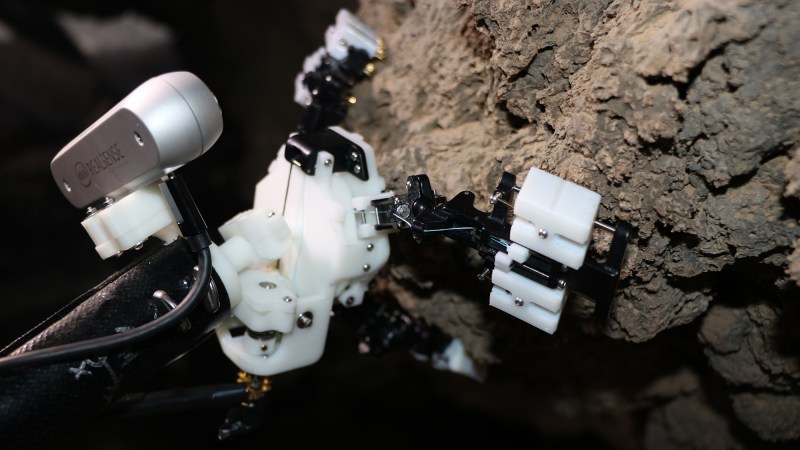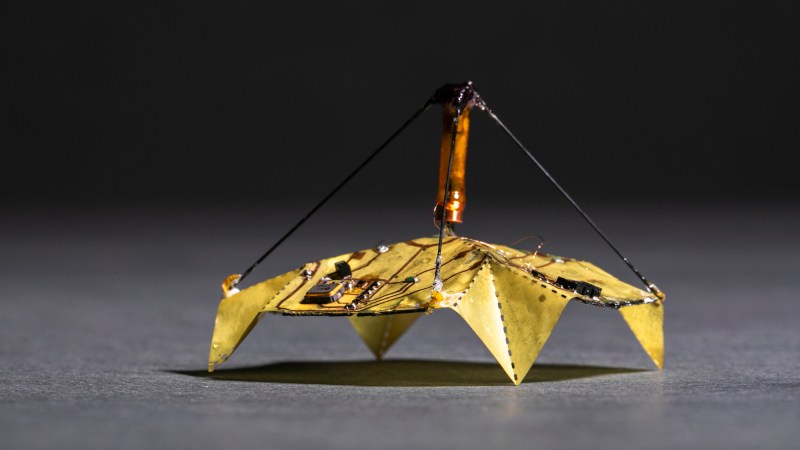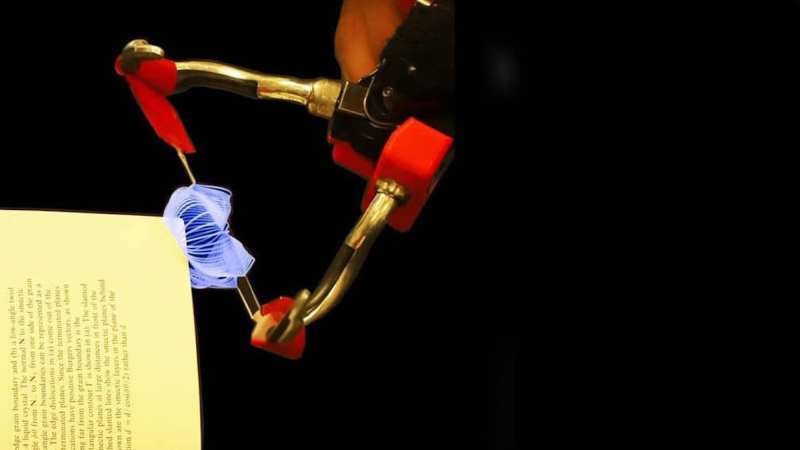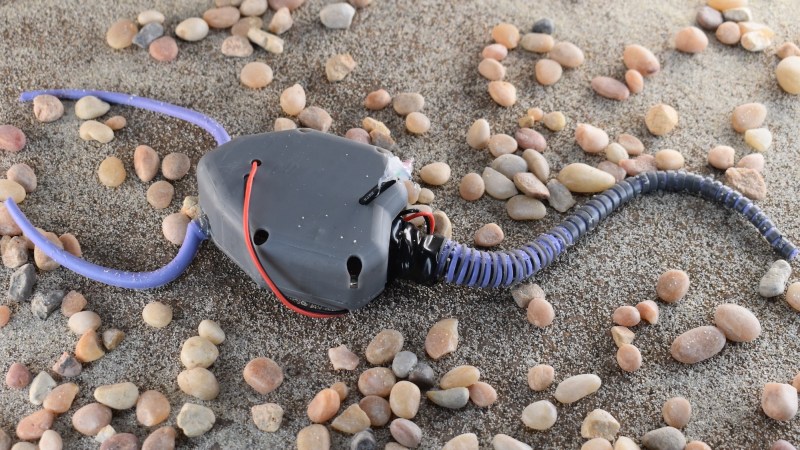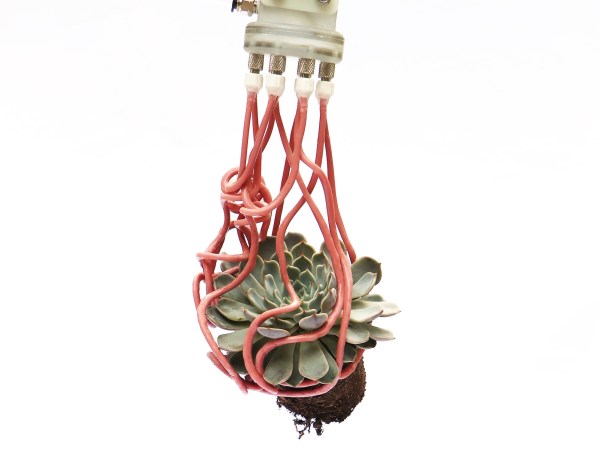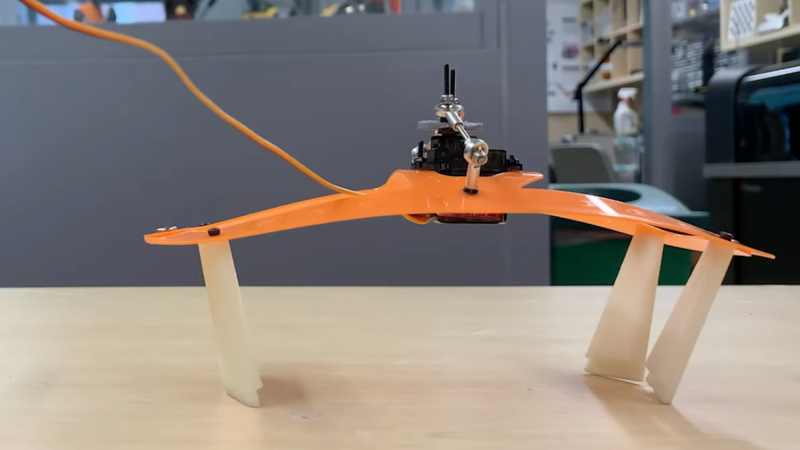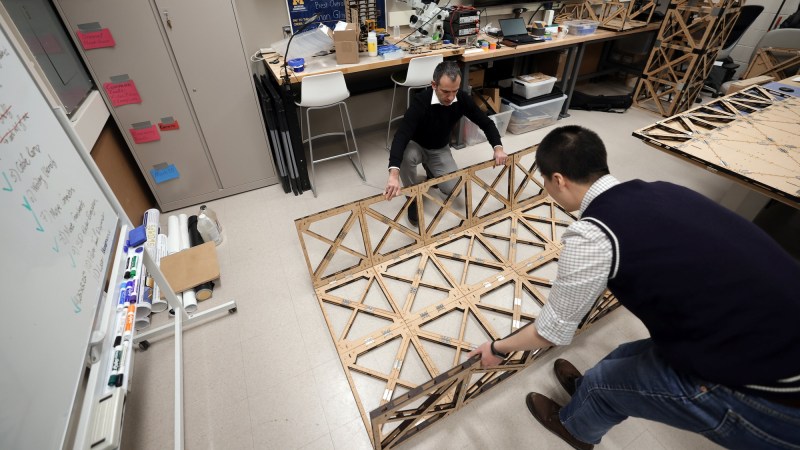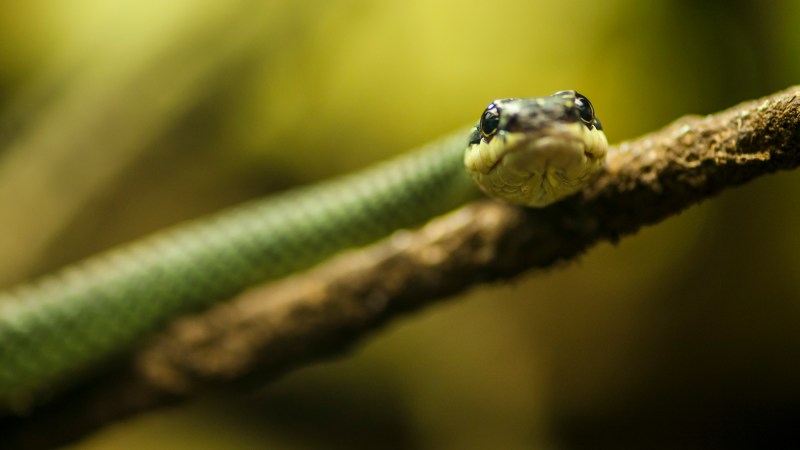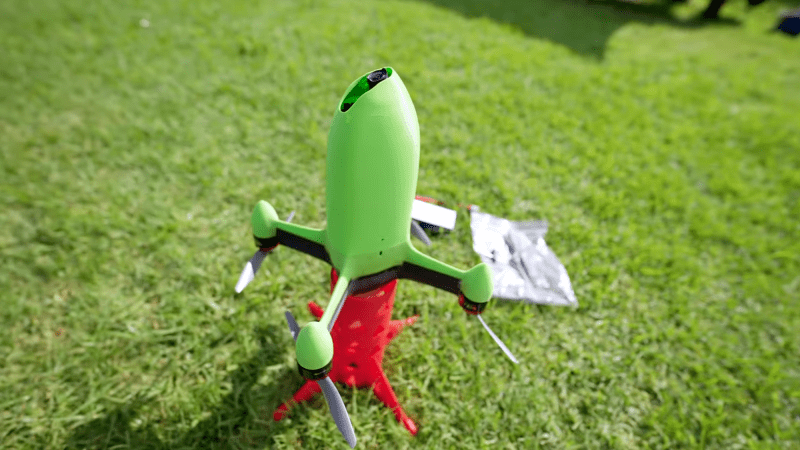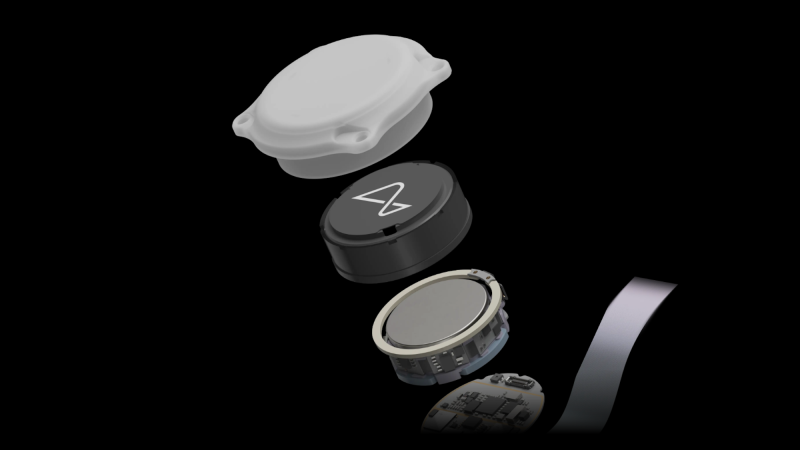

Unlike their octopus cousins, a cuttlefish’s 10 tentacles aren’t necessarily equally sized. While the small cephalopod possesses four same-length pairs, its other two appendages extend and contract as needed to more easily capture their prey. And although a new robot designed by engineers at China’s Shanghai Jiao Tong University isn’t going on the hunt anytime soon, its trio of grippers can clutch and manipulate a wide array of objects much like their cuttlefish inspiration.
Detailed in a recent paper published in Cyborg Bionic Systems, researchers combined pneumatic and cable-driven arrays to independently control the stiffnesses and lengths of three tentacle-like “fingers.” Unlike similar gripping robots that rely on molded silicone, engineers explained in their study that each finger uses fabric coated in thermoplastic urethanes (TPU) and extremely thin sheets of metal. These then can form “soft-rigid hybrid origami chamber structures” that crease depending on how long or short it needs to become in order to grab an object.

In trial testing, the cuttlefish bot successfully picked up, held, and maneuvered a variety of items with vastly different sizes, shapes, and weights like 0.1mm-thin fabric, an apple, and a soccer ball. To customize each finger’s length and tension, handlers inflated the origami chambers with positive pneumatic pressure while creating “an antagonistic actuation system with the cables, making the finger stiffness tunable via active controlling of the input pressure value,” the team writes.
[Related: Why robot-makers are studying cuttlefish eyes.]
In the team’s June 3 announcement, the university explains that kind of control customization and nuance “is essential for tasks that require fine manipulation capabilities, such as assembling delicate components or navigating through cluttered or uneven surfaces.”
Of course, the robotic gripper isn’t nearly as agile or adaptable as its cuttlefish inspiration just yet. Engineers note in their paper that each origami chamber currently requires a “manual manufacturing process” and still requires human input to control. In the future, the engineers intend to optimize the manufacturing process and integrate actual sensor systems to expand its potential utility and allow for more “sophisticated human–robot interactions.”
This multifunctionality could make successive iterations extremely useful in manufacturing and medical facilities while handling many different types of objects, tools, or construction parts. It’s unlikely such origami-cuttlefish bots will ever need to catch unsuspecting prey—but thanks to both the folding art and biological inspirations, they could provide a dexterity missing from many existing, similar machines. Maybe researchers will also find further inspiration in the cephalopod’s effective camouflage and impressive eyesight.
